Have you always dreamed of penning the type of novel that keeps readers up at night, urging them to keep turning pages? If so, you’ll enjoy learning about the Snowflake Method plot template, a sure-fire tool for keeping readers engaged.
What is the Snowflake Plot Structure?
Designed by award-winning novelist Randy Ingermanson, the Snowflake Method of story construction is based on a pattern known to mathematicians as the snowflake fractal.
The basic idea is that, just as a snowflake consists of many highly organized parts, all the elements of a successful novel need to be designed in an orderly fashion. After all, readers won’t stick with a confusing, poorly constructed story that makes no sense, or that doesn’t contain enough tension to keep them interested.
You can use the Snowflake Method to brainstorm compelling characters and tension-filled plots. If you’re interested in character development, you’ll also want to check out Plottr’s Snowflake Method Character Template.
For now, let’s take a look at who this method is for, and its plot points which build high-stakes action and suspense.
Who is the Snowflake Method for?
Maybe you’re an author with a lackluster first draft and you’re not sure how to shake things up. Or maybe you’ve just received a long letter from your editor or critique partner detailing all the places in your story where it rambles and wanders. Ouch.
Perhaps you’re just a highly organized individual with a brilliant story idea, but need some guidance on how to structure it for success? The Snowflake Method might provide just the direction you need.
This method works for virtually any genre, and will help you structure your story from start to finish. Be warned, though: a detail-oriented, premeditated plot is the name of the game here. If you’re a fly-by-the-seat-of-your-pants writer (a “pantser”) who prefers to allow your story to unfold naturally, the Snowflake Method may not be your preferred kind of method.
Plot Points of the Snowflake Method
The Snowflake Method primarily consists of “three disasters, plus an ending.” These disasters should be evenly distributed throughout the “beats” or scenes of your story to keep the tension high.
Readers crave drama, tension, and suspense, and the best way to provide it is to throw all kinds of challenges at your characters. These don’t have to be limited to external, physical obstacles either.
Often, the mental and emotional tests we face are the toughest hurdles of all. The plot points of the snowflake method will help you create varied challenges for your protagonist. Let’s take a closer look at each of these points, complete with examples from the sci-fi classic, Star Wars.
First Disaster
The first disaster comes roughly at the 25 percent mark of your story. It’s something bad, often caused by external circumstances — like a natural disaster, a violent act, or a tragic accident.
Whatever it is, this disaster is significant enough to force your protagonist to take action.
Example: Luke is moved to action after the murder of this aunt and uncle. He agrees to leave his home planet with Obi-Wan Kanobi.
Second Disaster
This one happens about halfway through your story.
Up until this point, your main character has been trying to achieve their story goal (and fix whatever happened in the first disaster) but they’ve been going about it all wrong. In fact, instead of improving things, the character’s efforts make the situation even worse and end up leading to a new disaster. This forces them to try a new approach — one that actually works. But not quickly or easily.
Example: Luke’s mentor, Obi-Wan Kenobi is killed and he’s now on his own. He now must step up and make his own decisions–and he needs to actually start using the Force.
Third Disaster
The final disaster comes roughly three quarters of the way through the story. It’s even more horrible than the previous two, something so bad it forces your protagonist and antagonist into a final showdown that will determine who wins and who loses. They both must equally commit to end the story.
Example: Luke and his comrades are forced into a showdown with Darth Vader who means to crush the rebellion and destroy the planet. Luke chooses to make a stand, which leads to a final showdown and ultimate victory.
Do you see how the situation goes from bad to worse to the very worst for poor Luke? Only then does the tide turn, and he’s finally able to come off as the winner. This is the type of plot progression that keeps readers (or viewers) on the edge of their seats.
How Do You Use the Snowflake Method Plot Template in Plottr?
First, you’ll need to get a Plottr plan or sign up for a free trial. Once you have Plottr set up on your computer, follow these four easy steps:
- Step 1: Open Plottr, and under Files in the dashboard, choose Create from Template
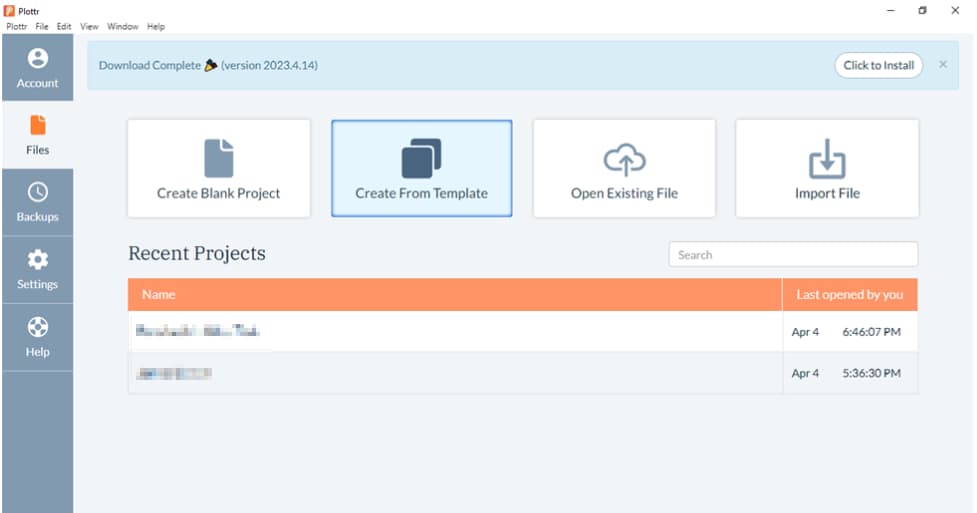
- Step 2: Scroll down to the Snowflake Method template, select it, then click Create New Project
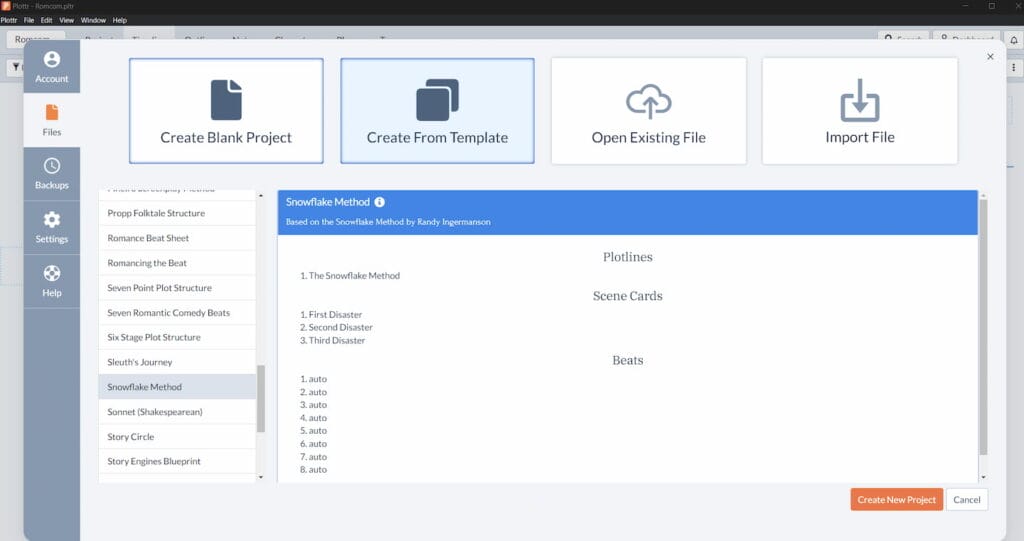
- Step 3: After you choose a name for your project (so you can open it easily later), it will open in timeline view
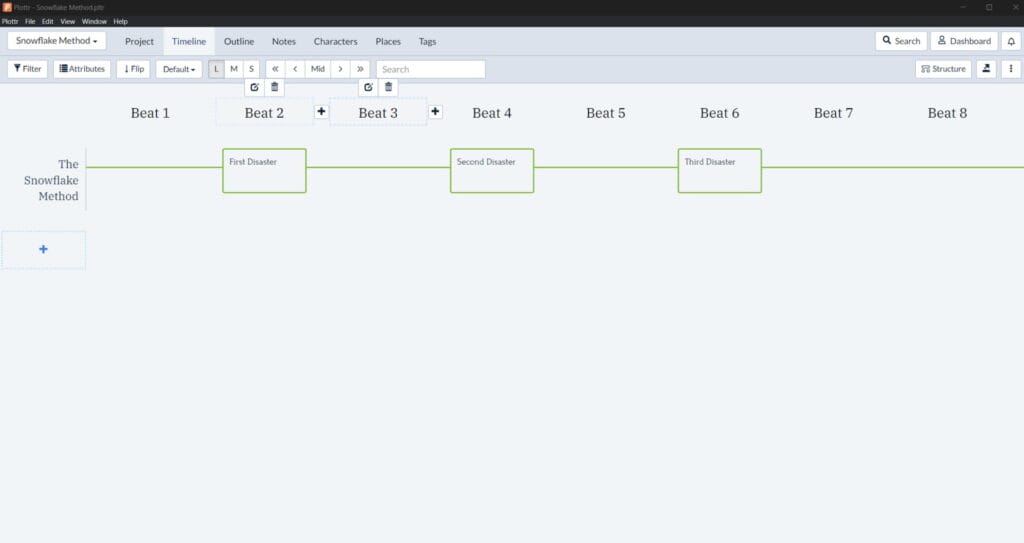
- Step 4: Click any of the first, second or third disaster beat scene cards to start adding your ideas and expand the card
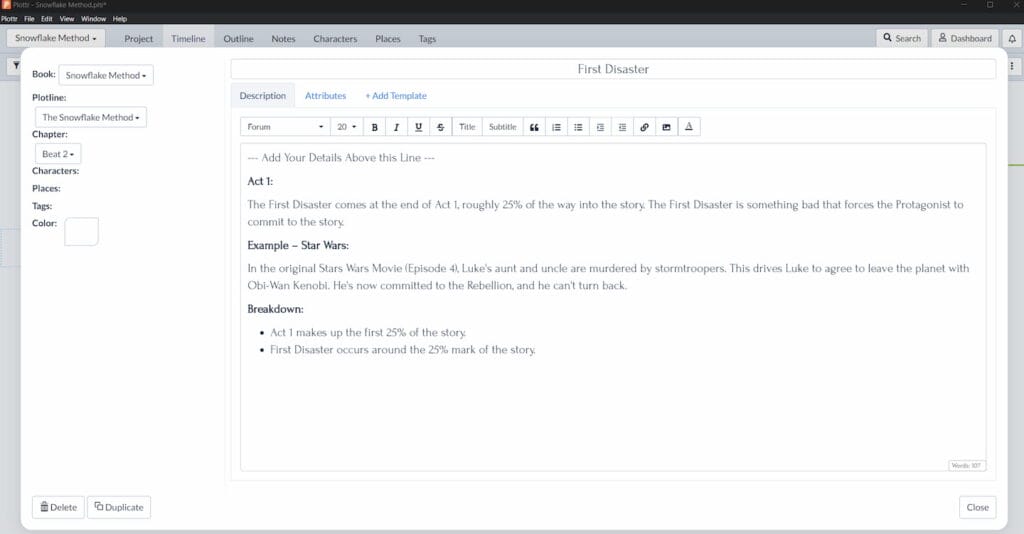
The templates in Plottr work together like Jedi and the force! Try these plot templates also divisible into three for adding secondary plotlines such as individual characters’ arcs:
- Three Act Structure
- Three Story Method
- The Hero’s Journey
Time to Dish out Disaster
Ready to put readers on tenterhooks for what disaster will happen next? Start a free sixty-day Plottr trial now and explore all the plot and character templates that will help you brainstorm a more captivating story. Share in the comments below which template is your favorite!
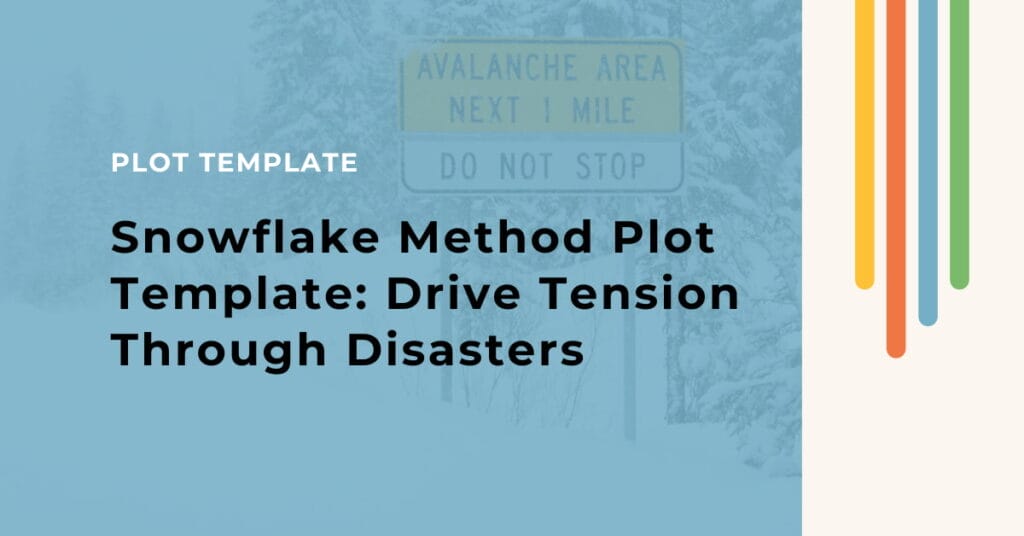
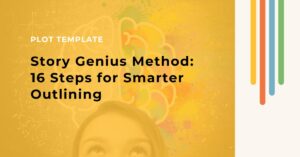
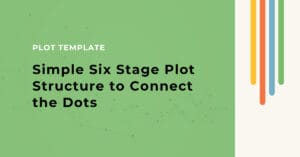
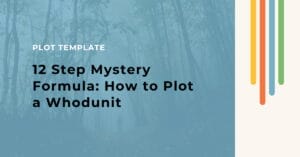




Comments